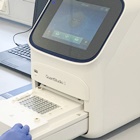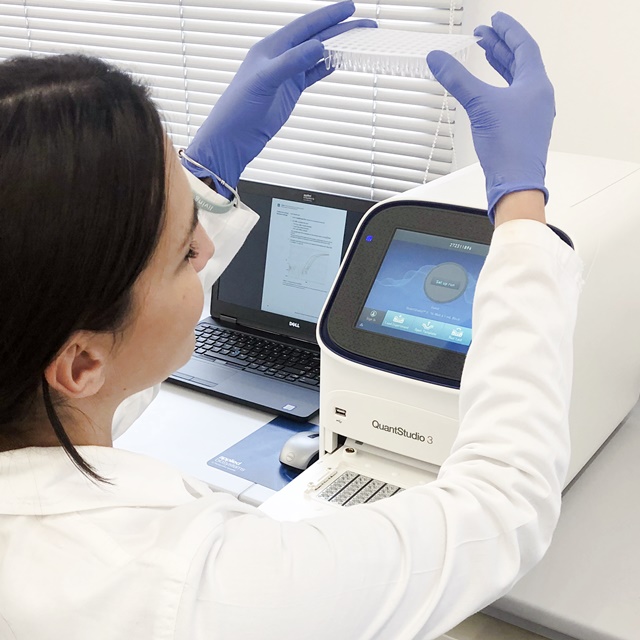 The transcriptome is the complete set of messenger RNA (mRNA) molecules. It displays the set of actively transcribed genes, i.e. the cellular program and actively responds to environmental conditions and genetic modifications. Therefore, transcriptome analysis provides a sensitive readout for fundamental understanding of cellular functions and their optimization. Over the recent years, transcriptomics has become an integral part of biotechnology research and we use this technology as valuable guidance in many of our iSBio projects (e.g. Kind et al. 2011, Buschke et al. 2013). That is why we have decided to expand our in-house technology pipeline.
The transcriptome is the complete set of messenger RNA (mRNA) molecules. It displays the set of actively transcribed genes, i.e. the cellular program and actively responds to environmental conditions and genetic modifications. Therefore, transcriptome analysis provides a sensitive readout for fundamental understanding of cellular functions and their optimization. Over the recent years, transcriptomics has become an integral part of biotechnology research and we use this technology as valuable guidance in many of our iSBio projects (e.g. Kind et al. 2011, Buschke et al. 2013). That is why we have decided to expand our in-house technology pipeline.
As a first part of our transcriptomics pipeline, we have now established the workflow for quantitative real-time PCR (qPCR), the "gold standard" for absolute and relative quantification of expression levels of targeted genes. In September 2019, our team had the opportunity to test novel instruments for transcription profiling and train for their future utilization. For quality control along the multi-step transcriptomics protocols, we have acquired the Bioanalyzer 2100 (Agilent Technologies) with accompanying software and assays. The device uses on-chip electrophoresis technology and provides accurate determination of sample integrity and purity, which is of a great importance for our applications. For qPCR analysis, we selected the QuantStudio3 instrument (Applied Biosystems). It precisely monitors the amplification of genes of interest during on-going reaction cycles. The device offers the possibility to set multiple annealing temperatures at once, which expands application and precision. We have started to implement qPCR in several of our projects to learn about cellular control, identify bottlenecks and validate genetic changes. Our goal is to intensify the use of transcriptomics in our research and use this technology in complementation to metabolomics and fluxomics, key expertise at iSBio since almost 20 years.
Related publications:
Buschke N, Becker J, Schäfer R, Kiefer P, Biedendieck R, Wittmann C (2013) Systems metabolic engineering of xylose utilizing Corynebacterium glutamicum for production of 1,5-diaminopentane. Biotechnol. J. 8:557-70.
Kind S, Kreye S, Wittmann C (2011) Metabolic engineering of cellular transport for overproduction of the platform chemical diaminopentane in Corynebacterium glutamicum. Metab. Eng. 13:617-627.
